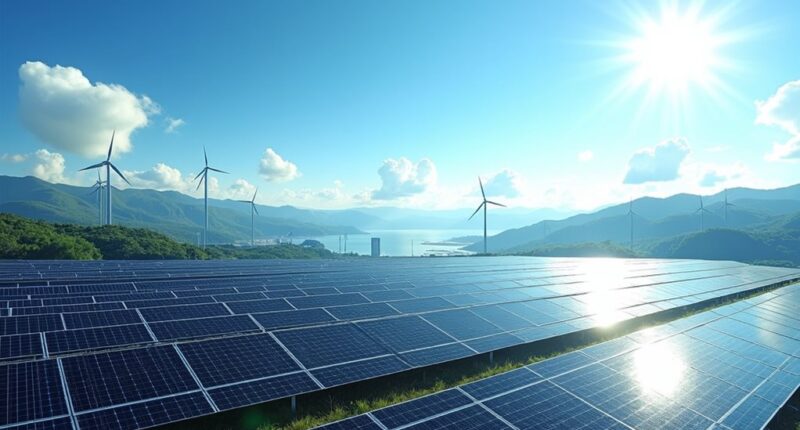As the world collectively holds its breath, waiting for the next big breakthrough in clean energy, a fascinating array of energy projects for decarbonization is unfolding across the globe. In 2025, the U.S. is set to welcome an impressive 32.5 gigawatts (GW) of new utility-scale solar capacity. Texas and California are strutting their stuff, contributing nearly half of these additions.
By 2029, solar photovoltaic (PV) systems are expected to surpass hydropower as the largest renewable energy source, and with solar module costs dropping to below $0.10 per watt, it’s clear that this technology is on a rocket ride to the top. Renewables set to surpass coal globally by early 2025, fueled by the need for lower emissions and energy security. In addition, U.S. natural gas consumption averaged 90.3 Bcf/d in 2024, highlighting the increasing demand for cleaner energy sources.
Solar PV systems are soaring, set to outpace hydropower as costs plunge below $0.10 per watt!
But wait, there’s more! Wind energy isn’t sitting idly by either. With an anticipated 7.7 GW of new wind capacity on the grid, states like Texas, Wyoming, and Massachusetts are leading the charge.
Two offshore wind plants, Vineyard Wind 1 and Revolution Wind, are also gearing up to make waves. Curiously, onshore wind is now cheaper than many new coal or gas facilities, proving that green energy isn’t just a trend; it’s a savvy financial choice.
Battery storage is experiencing an explosion of its own, with 18.2 GW of capacity set to be added in 2025. This leap will see battery storage surpass pumped hydro as the dominant force in the energy storage arena.
And let’s not forget hydrogen; 65 green hydrogen projects are on the horizon, promising to be a game-changer in industrial decarbonization. These innovations are creating DeFi investment opportunities in sustainable energy that were impossible in traditional banking systems.
Finally, nuclear energy is making a comeback, thanks to a shift in public attitudes and the rise of small modular reactors. States like Arizona and California are diving back into the nuclear pool, proving that it’s not just about fission; it’s about vision.
With a record $2.1 trillion invested in clean energy in 2024, it’s clear that the future is bright—and quite possibly, a little greener.









